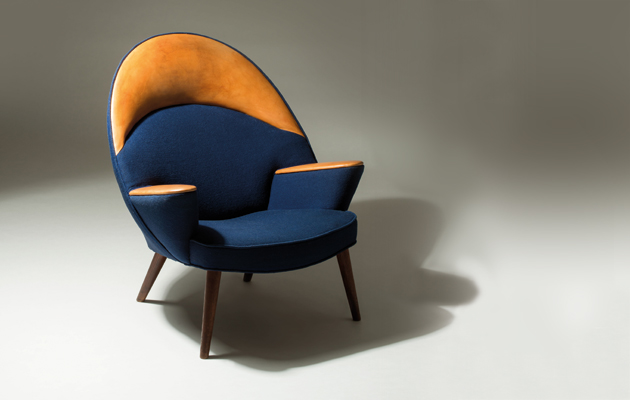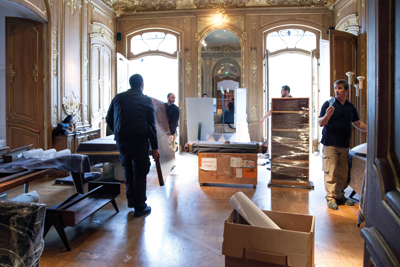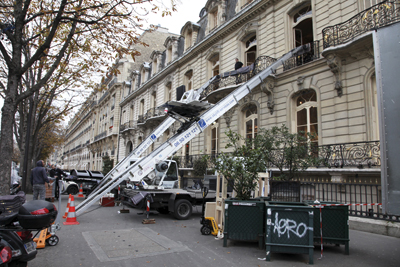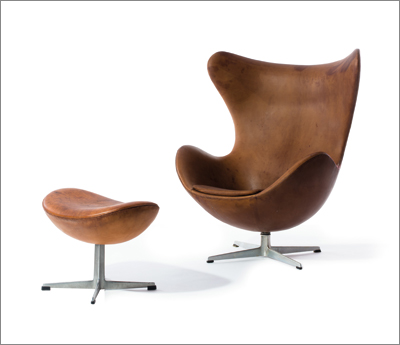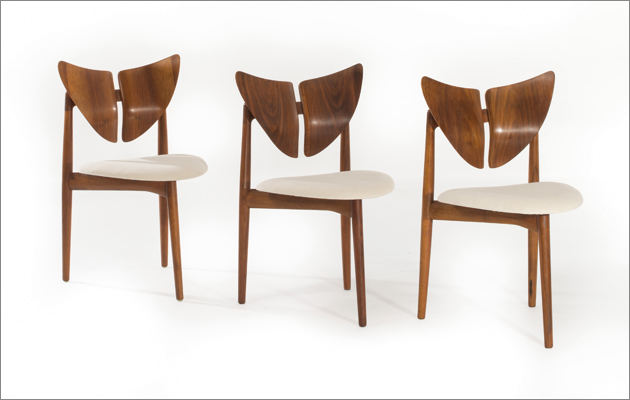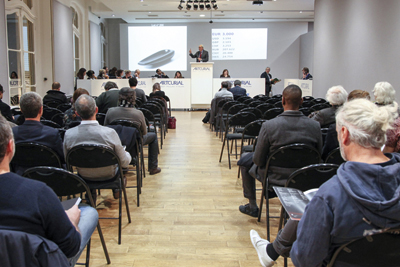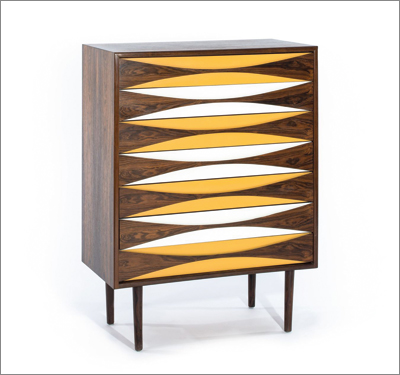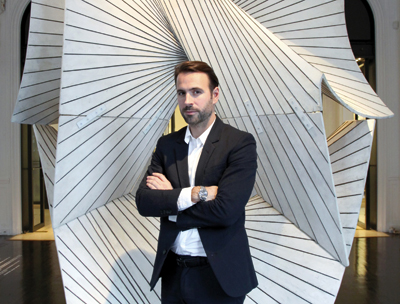|
|
||
|
Paris auction house Artcurial launched its pioneering sales of classic Scandinavian design last year, but has the trend for Nordic collectibles peaked before it even got started? Aldric Speer has been a collector of Scandinavian design classics for nearly 20 years. He has several hundred pieces of furniture scattered across his home, his father’s and sister’s homes, and five warehouses. Yet that clearly wasn’t enough for Speer (who is co-founder and creative director of fashion brand Surface to Air). In February last year, he joined the team at the esteemed French auction house Artcurial as their first Scandinavian design consultant. Artcurial, founded in 2002 just after auction houses were deregulated in France, has always had a design auction, featuring classic works from France, Italy and Scandinavia, as well as contemporary works. But, in the past decade, they have not only seen the number of Scandinavian items grow, but also their market value. The time was right to give pieces from the region their own stage, and Speer was the man to make it happen.
Packing up the lots after the auction wraps up
Suspension Artichoke lamp (c. 1958) by Poul Henningsen Last May, Artcurial hosted their first Scandinavian-only design auction (alongside their main design auction), and it was a clear success, setting three auction records and pulling in €1,348,270. It contributed to Artcurial’s total of €191m sales in 2015, which helped push the auction house to become the second biggest by sales in France, after Sotheby’s. December saw their second Scandinavian auction, with rare works by Alvar Aalto, Hans J Wegner (a particular favourite of Speer) and Josef Frank under the hammer. Battles were fought over a set of six Kurt Østervig Butterfly chairs and a group of 25 Arne Jacobsen door handles, which he originally designed for the SAS Royal Hotel in Copenhagen. The growing interest in Scandinavian design – particularly that from the mid-century – is clear. Once a favourite exclusively of design enthusiasts, since the 1990s it has become mass market. The over-the-top interiors that filled the pages of design magazines two or three decades ago have been gradually usurped by those proffering simplicity, functionality and earthy, woody materials – in short, the Scandi aesthetic.
Moving lots into Artcurial’s showroom off the Champs-Élysées
Arne Jacobsen’s Egg (1967) Classics pieces and designers are admired by collectors and inspire current design work the world-over, while, in the region itself, the global triumph of “Scandinavian” has meant that few new designers seemingly need or want to stray from the tenets of their forefathers. Those classics are, in turn, heralded as “timeless” – as relevant today as they were 70 years ago. But, will our love for them wane? Will their market value, currently being celebrated by Artcurial, reach a peak and then decline? It would seem naïve to think anything but. It is, of course, important to separate out those auctionable classic pieces, rare and crafted by masters, from the majority. Speers points out that everything from the 1940s was (by today’s standards) a design item: the culture of considered design and quality craftsmanship was pervasive throughout Denmark, Sweden, Norway and Finland. “It was a milestone in design history,” Speers says. The volume of good design that survives at all levels is both a blessing and a curse. |
Words David Michon
Photography Emilie Gouband
Above: Upholstered Peacock chair (c. 1953–55) by Hans J Wegner at the December auction |
|
|
||
|
Three Kurt Østervig Butterfly chairs (1956) at the December auction |
||
|
The strength of those names – Aalto, Wegner, Jacobsen – has prompted others beside Artcurial to capitalise on them, of course. Furniture by the leaders of the mid-century Scandinavian scene is popping up at auction everywhere. “Sometimes [other auctions will] have 400 or 500 lots,” laments Speer – an over-saturated market is a real risk. “I’m worried about the people doing a bad job,” he adds. The challenge for Speer, and Artcurial, is to be the ones making the right choices, and to build a reputation for the house as only selling the best of the best. December’s auction, though, saw more lesser-known names in the mix – a decision Speer called “daring” – and which admittedly didn’t work out as well as May’s edition. Artcurial’s Scandinavian Design sales total in December was just over half that of the auction seven months prior, hitting €709,000 only.
Auctioneer Hervé Poulain
The December auction in progress Emmanuel Bérard, director of Artcurial’s design department, is not the unconditional Scandinavian design addict that Speer is, and proves perhaps a little more honest about what we’re dealing with: “We are working with taste, and tastes are always changing,” he explains, “So, for the past years, Scandinavian design has been up there … people have been really curious. I think it will last for a time, then it will be something else.” He adds, however, that the Scandinavian legacy of craftsmanship is “no bullshit”. The quality of design is real, but then so too is that of other regions at other times. It’s the availability of objects that has, in part, made the market: there is a lot of Scandinavian design, so there are a lot of clients of Scandinavian design. But it is also partially just timing: “There’s a chronology,” says Bérard, “We’re [now] starting to discover Italian design from the 1960s and 70s – but what will re-emerge from that time, we don’t know.” These factors, and many more (not least of which is simply the health of the economy), contribute to the volatility of market value, and shape the sinuous movement of our likes and dislikes.
A rosewood chest by Arne Vodder
Aldric Speer at Artcurial Or so it goes for most design breeds. Yet, could it be that Scandinavian design is the exception to the rule – is it truly timeless? Bérard: “Timeless? Yes it is. It’s always been timeless. Right now it’s more timeless; but it won’t be timeless forever.” All the more reason for the Scandi designers of today to experiment. Thirty years from now, it won’t be the copies that become “timeless”. |
||
|
Clam chairs (1944) by Philip Arctander at the December auction |
||

